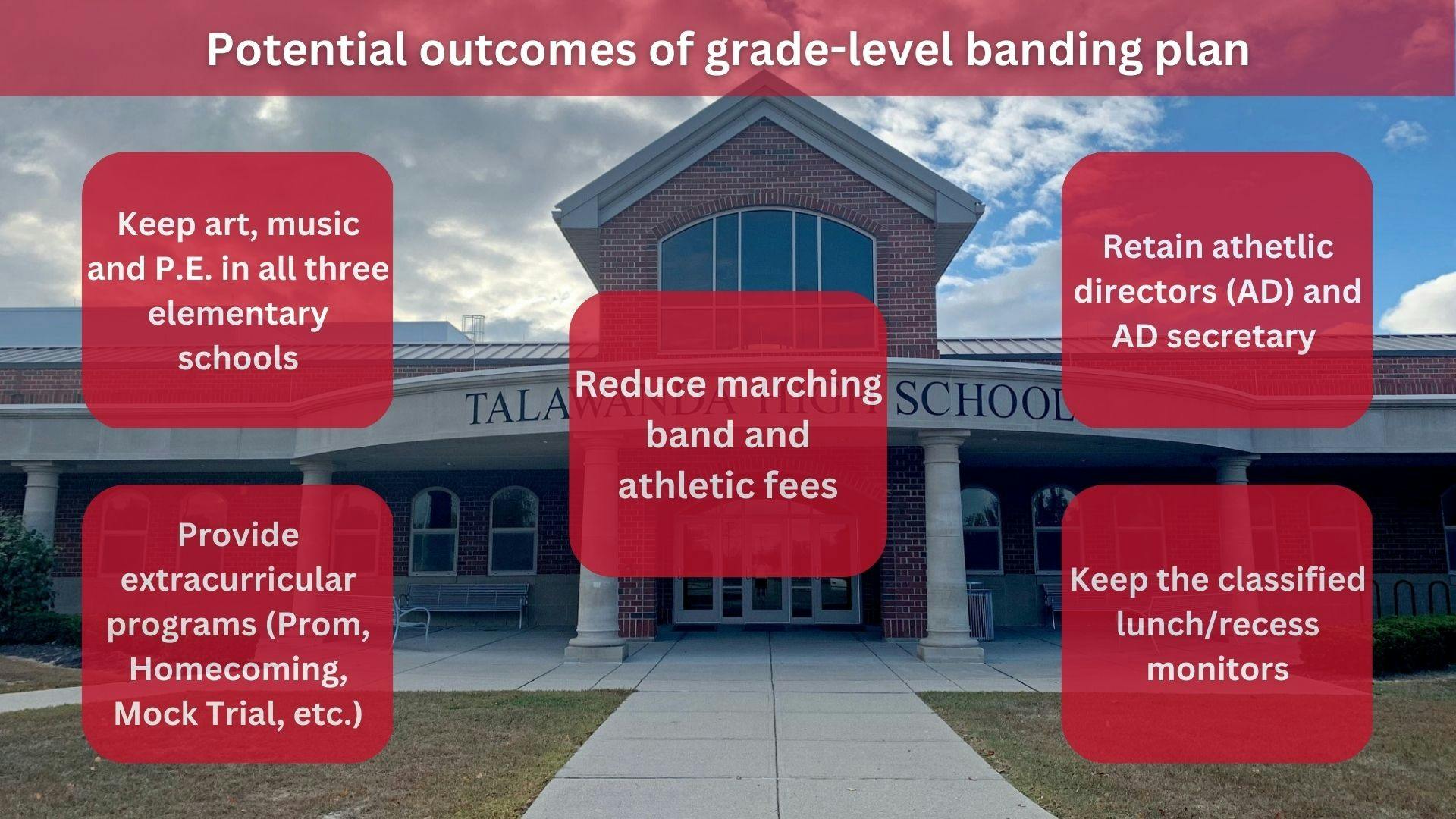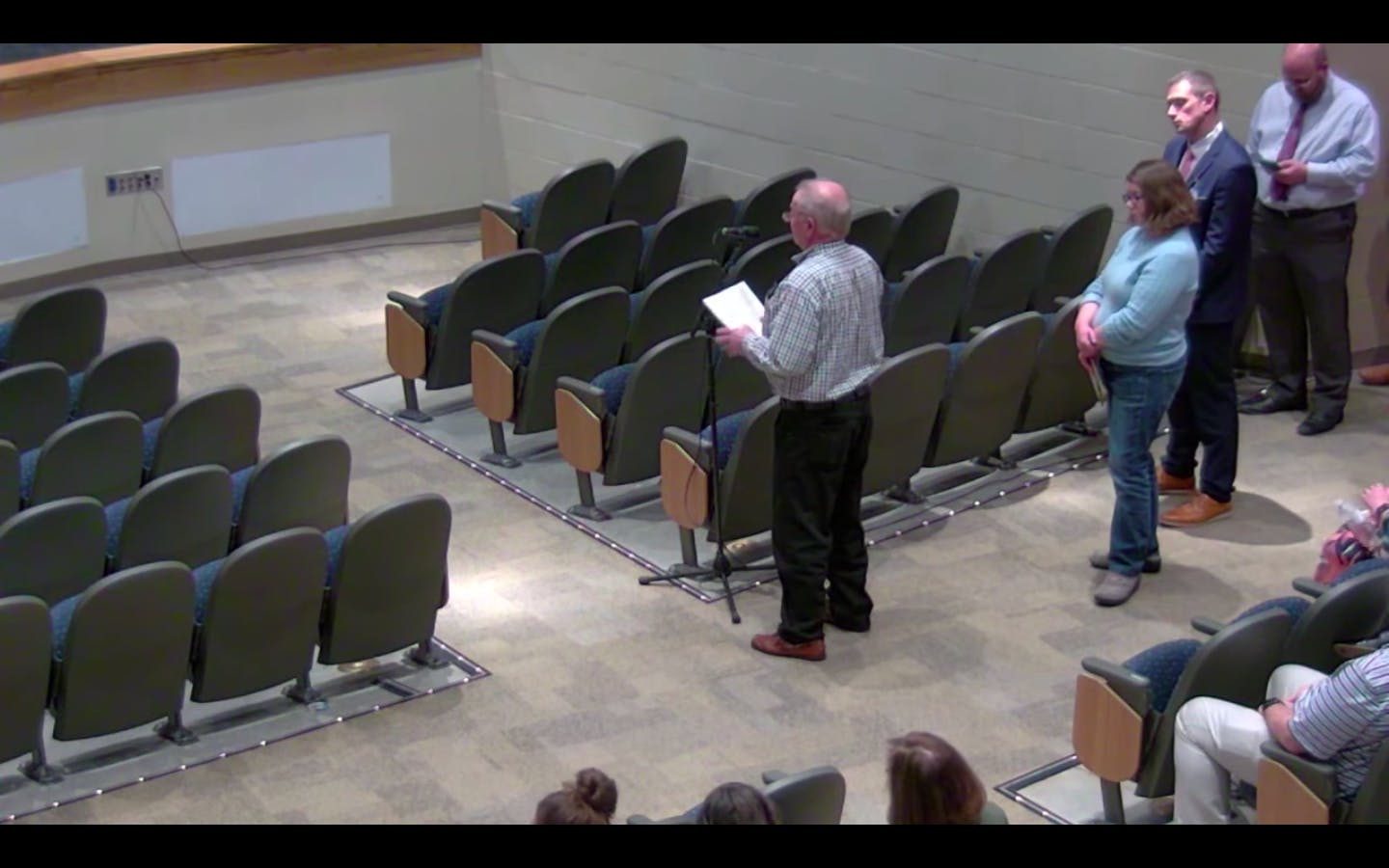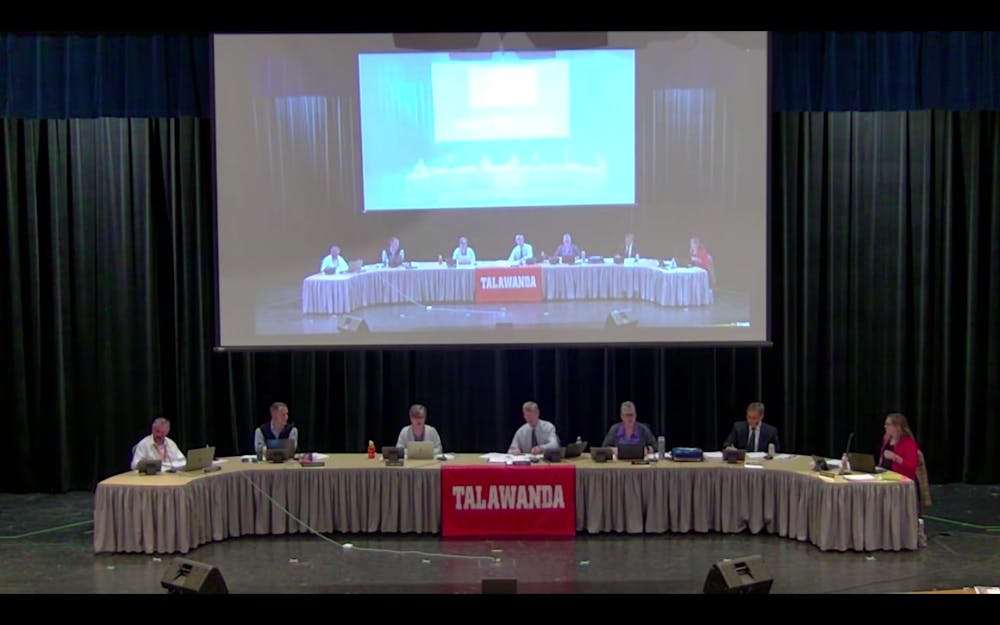At its Feb. 23 school board meeting, the Talawanda School District (TSD) presented information about its single-tier busing and grade-level banding proposal. The board announced it would hold off on voting on the proposal for the time being.
The district is considering this plan to reduce costs after a tax levy for school funding failed to pass last fall. The failed levy, which would have generated $4.8 million per year, means TSD must find new ways to address its deficit problems — which the proposal is aimed to do.
The plan would shift the three K-5 elementary schools to each housing two grade levels: Bogan Elementary would be for Kindergarten and first grade, Marsh Elementary for second and third and Kramer Elementary for fourth and fifth.
In doing so, the plan goes, a single-tier busing system will be utilized to cut down on transportation costs for the district by using Talawanda Middle School (TMS) as a central busing location.
No transportation will be provided for Talawanda High School students or any students living within a two-mile radius of the school they are attending. For students outside the radius, buses will pick up kindergarten through eighth grade students at the same time and drop them off at TMS, where elementary students will be then bused to their school.
The new bussing system would save the district $200,000 in fuel. Currently, TSD buses travel 3,700 miles as a fleet each day. The single-tier would reduce that figure to 1700 miles, resulting in the extra savings.
Scott Davie, principal of Talawanda High School said the proposal would produce an immediate $600,000 in savings, or $2 million over the next three years.
The savings would allow TSD to reinstate some of the cuts passed in December, including P.E., music, art and athletics. The athletic fee would also be cut by 50%, and events like prom and homecoming would be funded as well.
Molly Merz, principal of Bogan Elementary School, began the presentation by explaining how the plan was conceived.
“None of this was done lightly,” Merz said. “We know this is challenging, but everything we’re looking at is challenging.”
Merz then walked through how the school banding holds up to TSD’s strategic plan, which was developed by internal and external stakeholders to determine values and focus areas in the community’s education.

Enjoy what you're reading?
Signup for our newsletter
The first tenant of the strategic plan is bridge building for strong community partnerships. Merz said the grade banding system will strengthen this by enabling students to spend all of K-12 with their cohort.
“They get to spend their entire journey at Talawanda with the cohort they’re going to graduate with,” Merz said.
Merz also explained how presentations and events geared toward different age levels would be easier to execute, since each building would contain students of similar developmental levels.
The next part of the plan is having respectful, equitable and inclusive environments. Stephanie Jones, director of student services, said the proposed system would promote equity by ensuring that all students in the district have the same opportunities and experiences.
“Kramer [students] have the ability to do a walking field trip whereas if they’re at Marshall or Bogan, they can’t,” Jones said. “With [school banding], we can give common and consistent expectations for all children K–5.”
Jones explained how the grade banding system would allow the district to maintain high-quality staff.
“We think there’s some great professional development things that can be done by having all of a grade level in one building,” Jones said. “The horizontal planning, streamlined interventions and having, instead of three or four teachers per grade level, up to eight or nine.”
Elementary school class sizes would range between 19 and 26 students, with an average of 23. Eighteen to 38 teachers would need to move, depending on how many would prefer to switch buildings and stay with their current grade level or vice versa.

Parents raised concerns about combining schools during the public part of the school board meeting.
Some parents, like Emily Moore, questioned how the school-banding system would affect children’s connections with their educators.
“Having children transition every two years into a new building will impede their ability to form meaningful relationships with teachers and building staff,” Moore said, “who provide consistency and familiarity as children matriculate.”
Moore also mentioned how these transitions would be especially hard for children with mental health needs, learning differences, little parental support or a history of traumatic experiences.
“Frequent transitions may lead to difficulties with learning,” Moore said. “Additionally, these same children typically take a longer time to form relationships, due to the barriers they have.”
Other parents, such as Jessica Stoyko, voiced concerns about how the proposal’s plan to not provide busing to students within a two-mile radius to their school may affect low-income families.
“Over 26% of our students are economically disadvantaged, some parents don’t even have a vehicle,” Stoyko said. “Kids will have no structure in their lives if they can’t make it to school.”
David Amble, co-president of Talawanda Educators Association, expressed frustration at the lack of engagement from the administration toward the staff and community in developing the plan.
“The only staff input that was sought was the bare minimum. Rather than consult, [they] have developed a new plan only two months after proposing the district’s most radical cuts in a generation,” Amble said.
Amble asked the board to avoid voting on the proposal until the administration allows for more community input.
“Let’s review all the cuts and proposals and take time to develop a new and better plan that involves all stakeholders,” Amble said. “We have the time to do this right. The money doesn’t end tomorrow.”




